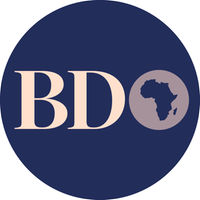
Central Bank of Kenya Governor Patrick Njoroge. FILE PHOTO | NMG
Summary
- Parastatals are part of the 10 largest borrowers and depositors in banks and pay huge insurance premiums.
- Banks have struggled to collect their debts from failing State corporations, resorting to auctioneers and placing some of them under receivership to get their loans paid.
- A Treasury report shows that more than half of the country’s 247 parastatals registered either a deficit or a loss in the last financial year that ended in June 2020.
Banks risk losing up to Sh100 billion loaned to parastatals, the Central Bank of Kenya (CBK) has warned, citing deepening cash-crunch among the State agencies due to slowdown in economic activity, competition from cheaper imports and bad governance.
A total of 35 banks issued loans to State-owned enterprises (SOEs) in December 2019 – comprising some of the largest single borrower exposures, with those in the energy sector accounting for the biggest share.
“The SOEs in the agriculture sector were able to service their loans, while SOEs in the transport, trade and manufacturing sectors have their loans mostly in watch and doubtful categories,” the CBK said in its newly published financial sector stability report.
Parastatals are part of the 10 largest borrowers and depositors in banks and pay huge insurance premiums.
Their employees also make the membership of most savings and credit cooperative societies (saccos), which makes them crucial for the economy.
The regulator said parastatals had accumulated debt faster than private companies but their assets are not growing, which means the loans were not used prudently and hence their struggle to repay.
CBK data shows that the long-term debt to assets ratio for SOEs increased marginally, from 108.1 in 2018 to 108.5 in 2019, while accumulation of long-term debt relative to equity by private companies declined.
“The high level of long-term liabilities against slow growth in assets suggests that the long-term debt was not used to fund SOEs assets. This limits productivity, expansion capacity and profitability of SOEs,” the CBK said.
“This in turn raises both fiscal concerns and financial stability issues through their exposure to financial institutions by borrowing and the government by ownership.”
The short-term liabilities to assets and to total equity ratios of SOEs increased from 15.4 percent and 12.6 percent in 2018 to 16.6 percent and 13.5 percent in 2019, respectively.
“However, current liabilities to current assets ratio, increased from 63.1 percent in 2018 to 66.3 percent in 2019, indicating that SOEs, especially, in the services sector are accumulating short-term liabilities much faster, which is not good for capital formation,” the CBK said.
Banks have struggled to collect their debts from failing State corporations, resorting to auctioneers and placing some of them under receivership to get their loans paid.
KCB has put Mumias Sugar in receivership and has attached a debenture to all East African Portland Cement assets in a demand for the repayment of an outstanding Sh6 billion debt.
Government firms have suffered huge losses over the years as a result of inefficiencies and poor management.
A Treasury report shows that more than half of the country’s 247 parastatals registered either a deficit or a loss in the last financial year that ended in June 2020.
Kenya Railways Corporation’s losses almost tripled from Sh8.47 billion in the previous financial year to Sh24.2 billion while Kenya Broadcasting Corporation had a deficit of Sh9.8 billion.
Nzoia Sugar had a loss of Sh3.48 billion, Kenya Power Sh3 billion and Portland Cement Sh2.74. The University of Nairobi reported a deficit of Sh2.23 billion.
They have turned to borrowing to survive knowing that the government would bail them out with taxpayer money whenever they fail.





No comments :
Post a Comment